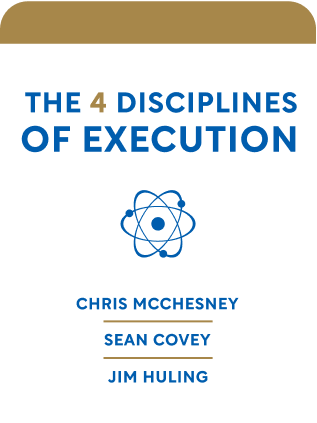

This article is an excerpt from the Shortform book guide to "The 4 Disciplines of Execution" by Chris McChesney, Sean Covey, and Jim Huling. Shortform has the world's best summaries and analyses of books you should be reading.
Like this article? Sign up for a free trial here .
Do you need to determine your 4DX lead measures? How can your measures support your wildly important goals?
Once you have goals, you need measures to achieve progress on those goals. The 4DX lead measures are the key indicators of progress. They can be developed using a four-step process.
Keep reading for the four-step process for developing 4DX lead measures.
Developing 4DX Lead Measures
Finding 4DX lead measures can be challenging. If you’re trying to do something you’ve never tried before, you have to do new things. How do you know what these new things should be? Like coming up with a WIG, there’s a four-step process:
Step 1: Brainstorm a List of Possible 4DX Lead Measures
Like step 1 of WIG brainstorming, come up with as many ideas as possible. The most effective lead measures may not be the ones that first occur to you. Make sure you focus on ideas that will help achieve the WIG. You’re not looking for a catch-all list of things it would be good to do. Coming up with lead measures requires a bit of that Discipline 1 focus.
While brainstorming, consider:
- What have we never done before that will help achieve the WIG?
- What are we good at that we can use to achieve the WIG?
- What are we bad at that might get in the way of us achieving the WIG?
- What are the activities we already do that are most important to achieve the WIG? Keep in mind the 80/20 rule—80% of your results will come from the top 20% of your actions. Choose your lead measures from these top activities.
- What did other people or companies with similar WIGs do? What were their lead measures?
Step 2: Assess Impact
Determine which lead measures will have the most impact on the team WIG. Probably all the ideas you come up with are good ideas, and you and team members feel like you should be doing all of them, but don’t fall into this trap—pick just a couple.
Step 3: Test the Top Candidates for 4DX Lead Measures
Test each potential lead measure. If the answers to all of the following questions are yes, the lead measure passes the test. Four of the questions are the same as in the WIG test, noted with an asterisk (*).
- Is it predictive? Will the lead measure influence the lag measure?
- *Can your team achieve the WIG without significant help from another team? (Is it influenceable?)
- Is it maintainable? The goal of a lead measure is to make new behaviors a habit. Therefore, ongoing processes are a better choice than one-offs.
- Ongoing processes: Attend all meetings of the volunteer executive.
- One-off: Sign up to be a member of a volunteer executive.
- *Are the results driven by the team rather than the leader? The team needs to engage with the measure or they won’t be interested.
- Weak lead measure: A leader more frequently audits.
- Strong lead measure: A team responds to audit findings.
- *Is there a way to measure it? You have to be able to measure the lead measures.
- Is the lead measure worthy of the effort it will take to carry out and measure? The lead measure must create enough impact to be worth the trouble, and shouldn’t have any negative side effects
- For example, a fast-food chain hired inspectors to visit restaurants. All the workers thought the inspectors were spies and morale dropped.

———End of Preview———
Like what you just read? Read the rest of the world's best book summary and analysis of Chris McChesney, Sean Covey, and Jim Huling's "The 4 Disciplines of Execution" at Shortform .
Here's what you'll find in our full The 4 Disciplines of Execution summary :
- The 4 disciplines that can make any strategy a successful reality
- Why a great plan falls apart when you don't think adequately about execution
- The 6 steps you need to scale the 4DX model across an entire organization






